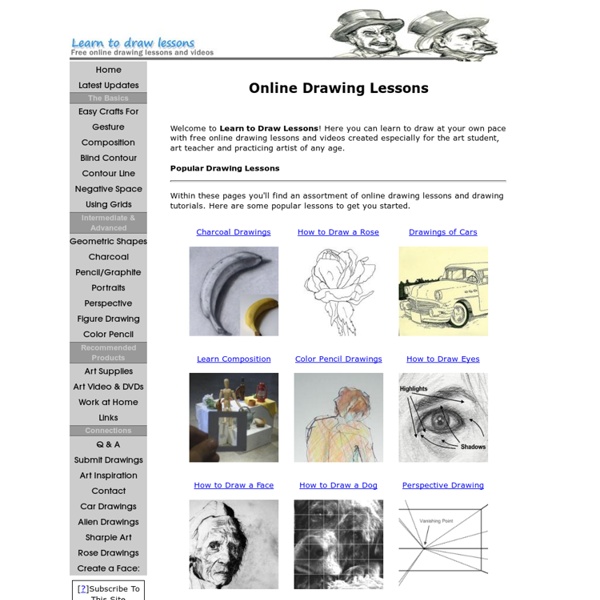



http://www.learn-to-draw-lessons.com/
Learn Basic Drawing Six FREE easy and fun Basic Drawing lessons! The six Basic Drawing Lessons I have created have proven successful for beginning students over the past 40 years I have been an art instructor. I have written step by step, information-rich lessons that are easy to understand and fun to do! Learning drawing skills and techniques is accomplished through exercises that acquaint students with drawing materials first, so that confidence is gained early on and the student is ready for the visual projects. Perhaps you are feeling cautious about drawing.
Science project: Food-dye Color Wheel Every year about this time I start to really, REALLY crave color. Like clockwork, every January I start scheming about decorating with yellow or orange or something bright just to liven things up a bit. It's been a little better this year because my kitchen is south-facing and everything is white and light blue, so it feels nice and light and airy. That being said, I still think more color this time of year is great.
Chapter 2. Human anatomy and figure drawing Chapter 2. Human anatomy and figure drawing Before we start, I'd like to point out that knowledge of human anatomy is not a replacement for studying the body from real life or photos. So keep cranking out those sketches! (And hoarding those Victoria's Secret catalogs and similar magazines. We Help You Draw fancymarquis: my new brush u guys were asking for!! hope u like it ^u^ !! thankyou for coming to the stream !! luv u guys Learn to Draw - The basic elements in drawing Let's get a bit more in depth with the elements of drawing. The rest of this website will get even further into each of these elements. Line is the most basic element of the drawing. Three Techniques for Quieting Your Mind Three Techniques for Quieting Your Mind Courtesy of Andrea A mere week ago, I was telling a client that I thought it was impossible to completely stop ourselves from thinking. I subsequently received some guidance that actually had me prove myself completely wrong! In the past week, my mind has quieted down remarkably during meditation, to the point of true quiet and emptiness.
Royal Baloo free printable packs All printables are provided free of charge, but please read the terms of use! Terms of Use These printables are provided free of charge and are for personal use only. You may: Print as many copies as you’d like How to Draw Ears For a video version of this tutorial visit www.proko.com/how-to-draw-ears-anatomy-and-structure In this tutorial I will go over the parts of the ear and suggest an easy way to remember all these complex shapes. At the end, I will show a step by step of an ear drawing. Basic Forms The simplified volume of the ear is very much like a megaphone. Tips for Drawing: Form and Volume Recently I came across some very wise questioning by an animator named Peter J. Casey during an online discussion of “How to get better at art” over at AnimationForum.net. Today I want to revise the answer I gave there and take a deeper look at practicing form and volume.
51 Types of Poetry - All Different Forms This article contains the many different poem types. These include all known (at least to my research) forms that poems may take. If you wish to read more about poetry, these articles might interest you: poetry technique and poetry definition. Pastels Plus Links to Tutorials - Hodgepodge Welcome to our Hodgepodge free listing of chalk pastels, acrylics and video art tutorials for all ages. This list of free tutorials is always being updated. Rather than 50, we now have 100+ free art tutorials! Please scroll down for a list of printable lessons. Click on each link to view and print individually…
How to Draw Lips For a video version of this tutorial visit www.proko.com/how-to-draw-lips-anatomy-and-structure This tutorial is a continuation of How to Draw the Head from Any Angle. I will cover the basic forms of the mouth, some anatomical information, and the key information about the minor planes. At the end, I will show a step by step drawing of the lips. Basic Forms One of the most overlooked ideas of the mouth is the cylindrical tooth cylinder underneath.